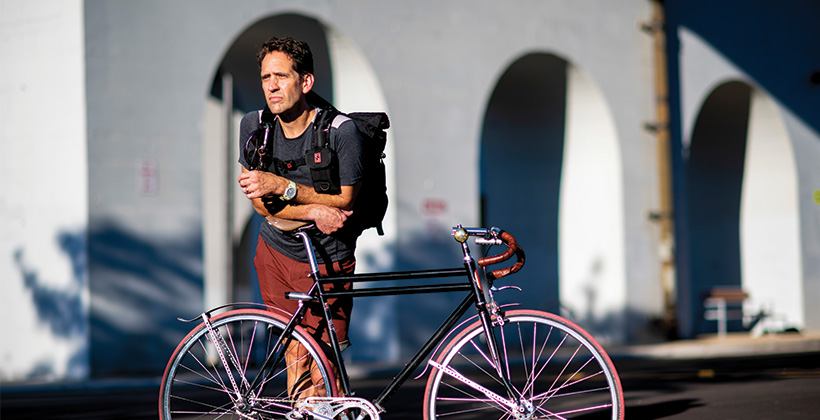COVER STORY
Paul Marasco, PhD
Interview By John Soeder
Photo: Lisa Dejong
“When I went back to school and studied neuroscience, I realized that science actually is my art. Science and art are both different ways of explaining the world around you.”
Paul Marasco, PhD
Listen to Dr. Marasco’s thoughts on innovation in his own words.
I commute by bike to and from work. Riding through the city, you have to be nimble and risk-tolerant. It’s the same when you’re innovating. You need the right environment. As long as I have some peace and some breathing room, interesting thoughts will pop up.
Cleveland Clinic gives us the space to be creative. In my experience, not every institution does. Here, we’re surrounded by amazing colleagues. They’re really engaged. They’re moving things forward. They’re trying to show people what the future looks like.
Sometimes it doesn’t work. The key is to turn every failure into an advantage. A few years ago, we had a grant for some ideas that we couldn’t get to pan out. We didn’t feel good about the outcome, but it sent our lab in a new direction that ended up being the bread and butter of the cognitive technologies that we’re working on now.
Before I became a scientist, I went to art school. I studied sculpture and printmaking, but I didn’t feel like I had anything to say as an artist. When I went back to school and studied neuroscience, I realized that science actually is my art.
Science and art are both different ways of explaining the world around you.
In our lab, everyone has a creative background. I want people who see things that aren’t obvious, people who are in tune with things that are unexpected, that are challenging, that don’t make sense. We have a saying: You need to stay the hell out of your comfort zone. People who engage in the creative process aren’t comfortable with the mundane. They’re always poking around places that are odd and surprising.
That’s where the magic is. That’s where innovation happens.

Paul Marasco, PhD, is a Cleveland Clinic scientist in the Lerner Research Institute’s Department of Biomedical Engineering. His team develops bionic limbs with natural touch and an intuitive sense of movement. Dr. Marasco’s work has been recognized with innovation-focused research awards from the National Institutes of Health and the Defense Advanced Research Projects Agency, as well as a Presidential Early Career Award for Scientists and Engineers. He won a 2022 Clinical Research Forum Top 10 Clinical Research Achievement Award for bionic arms that allow their wearers to function like able-bodied people.